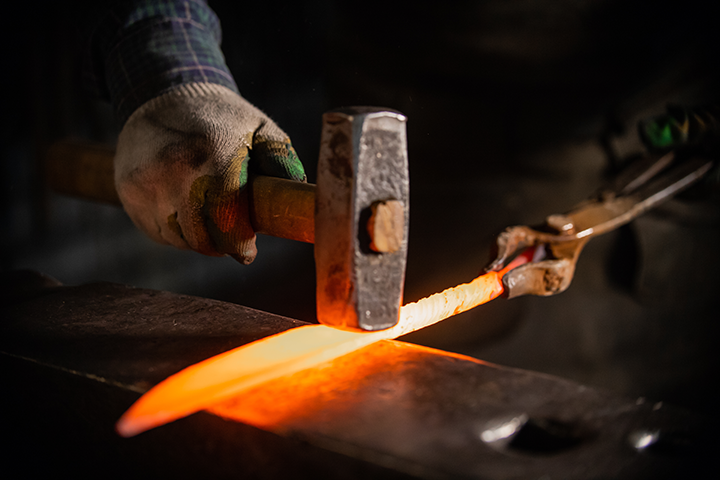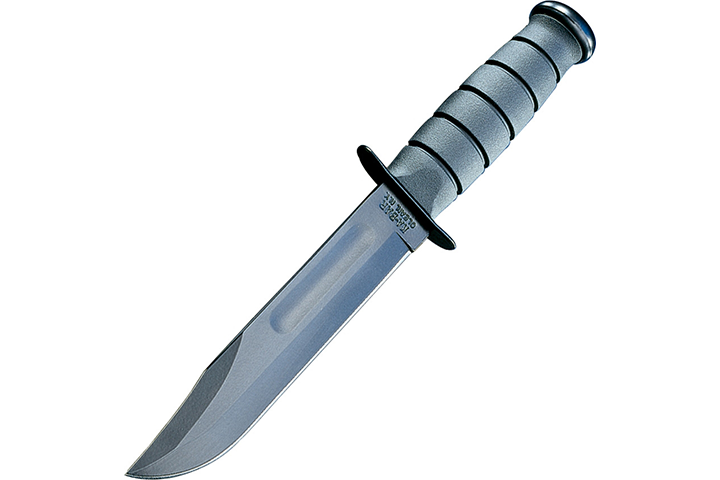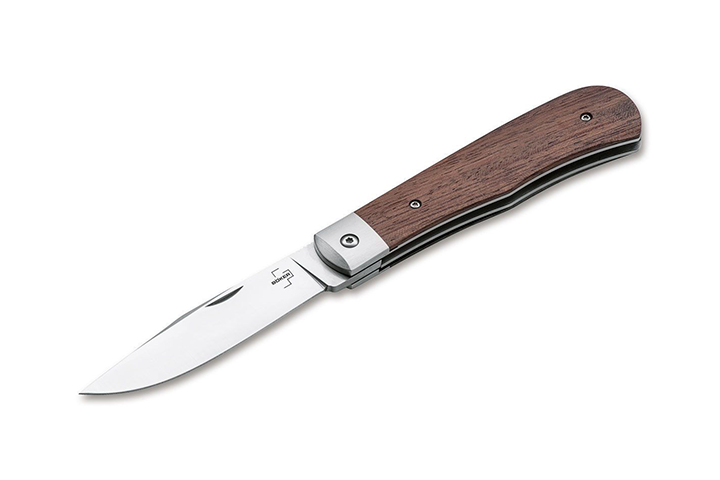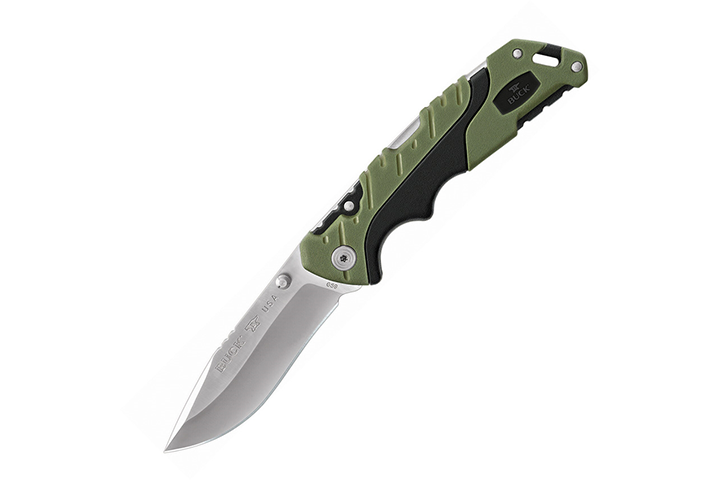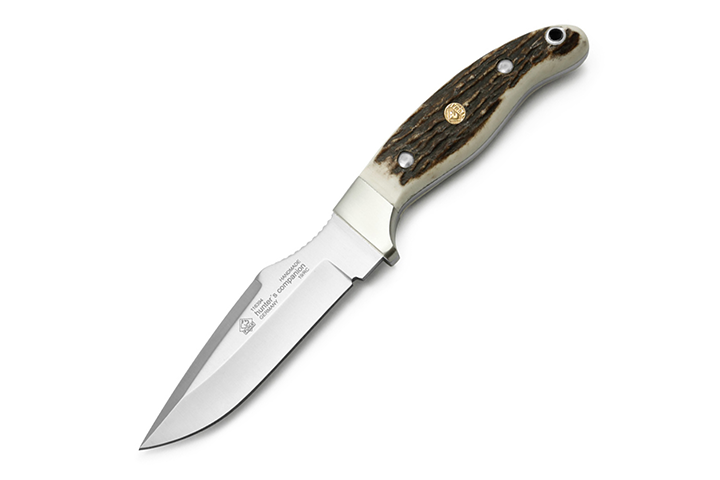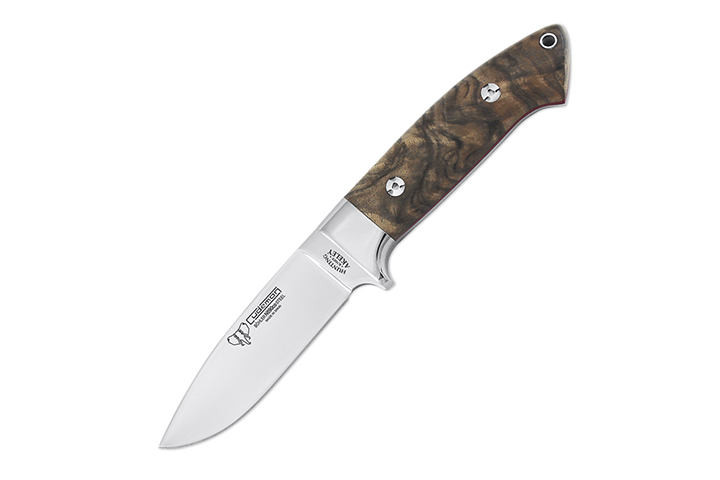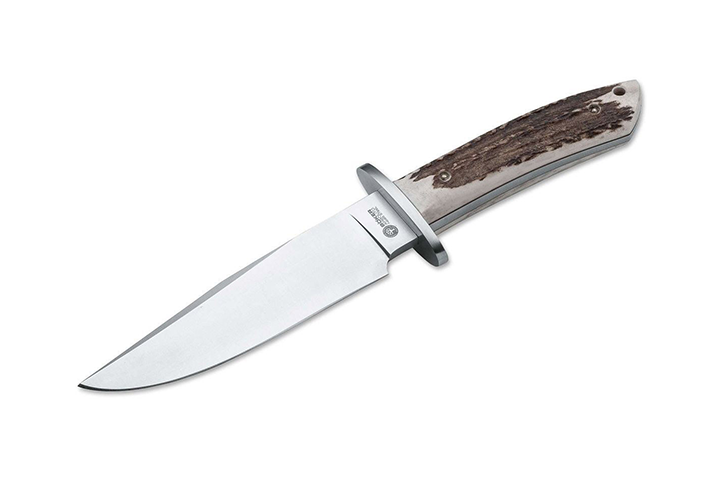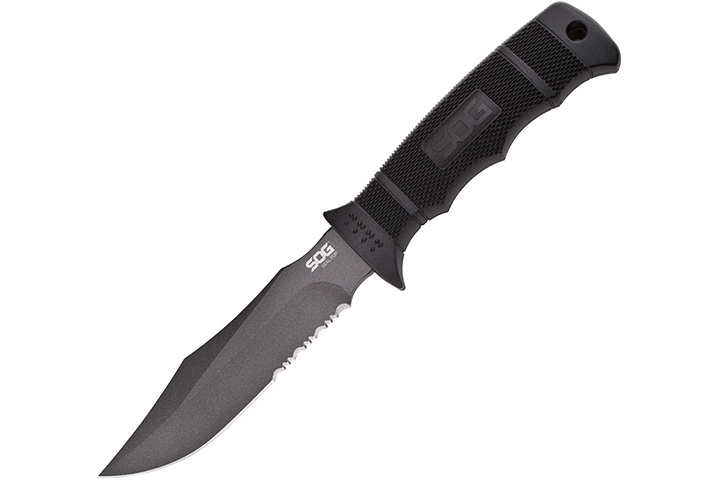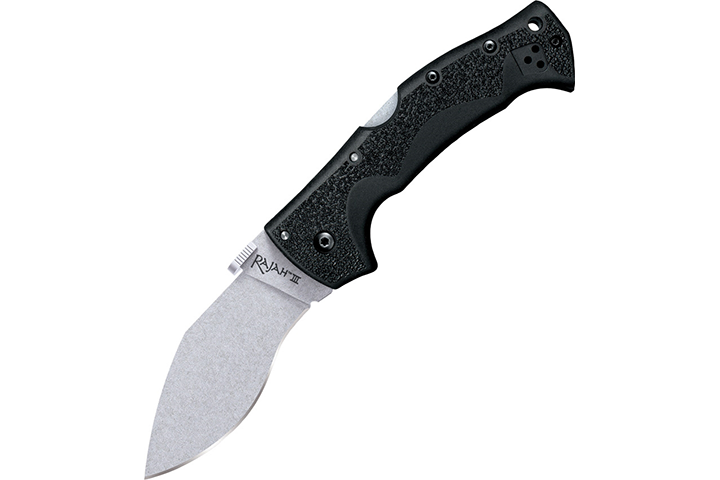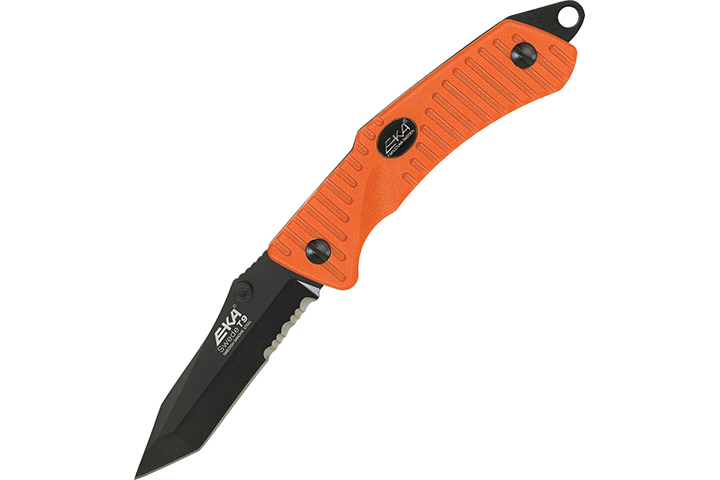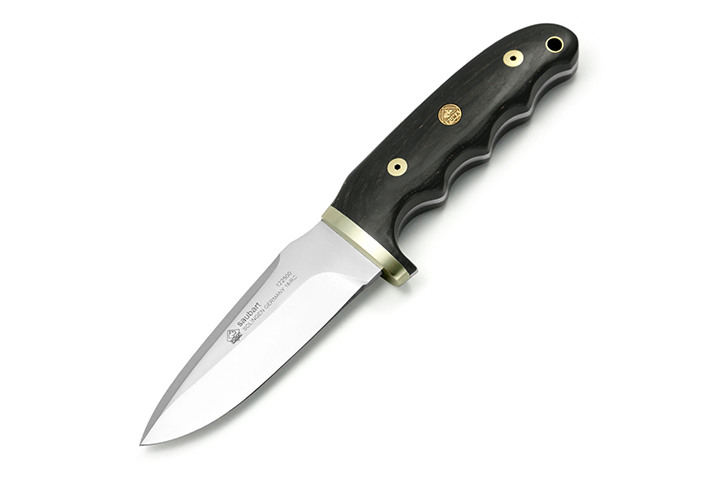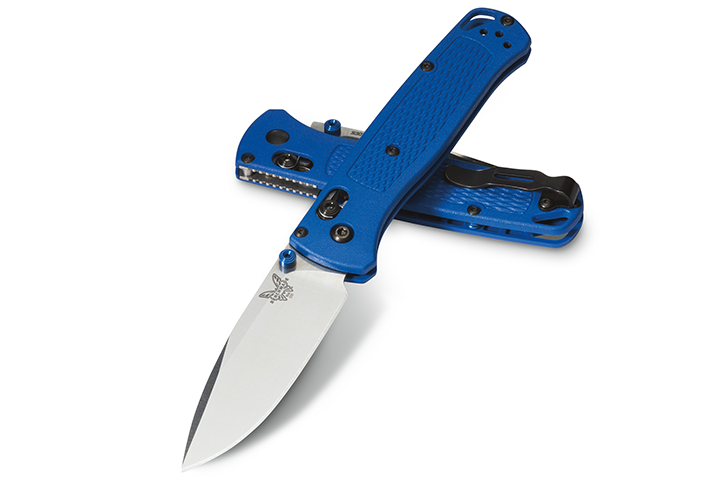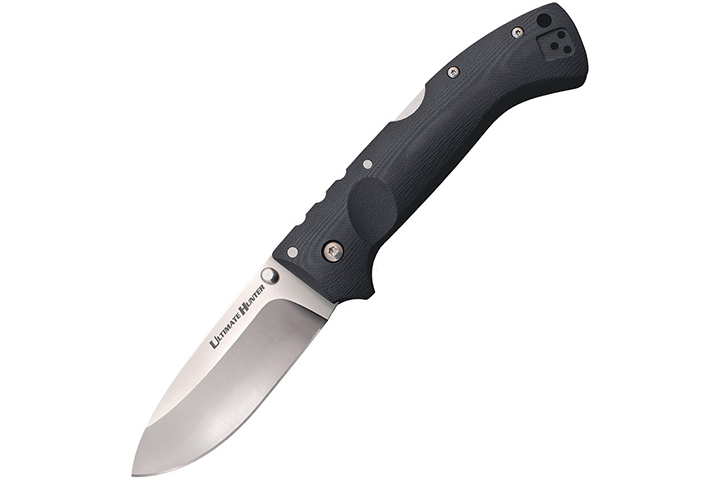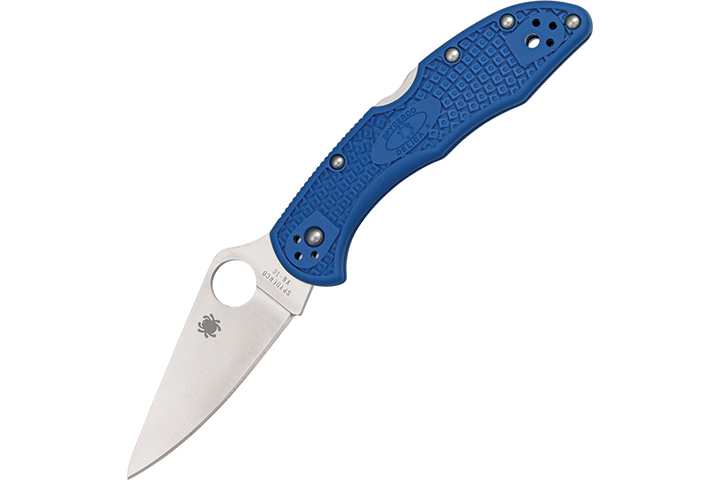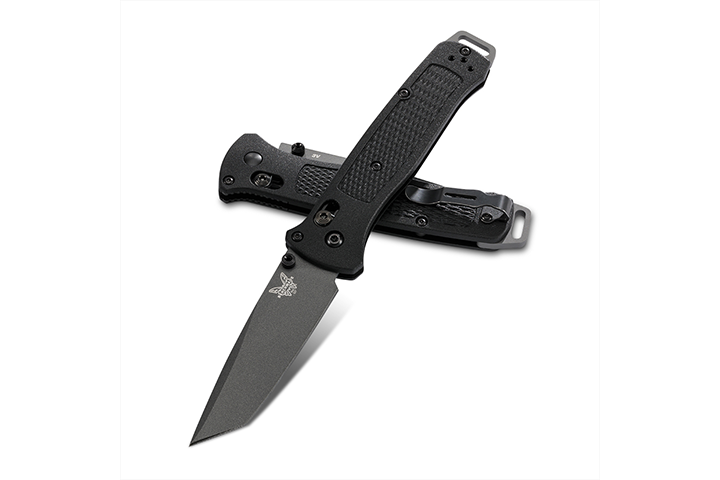Blog #4 - Understanding Blade Materials: A Comprehensive Guide to Common Knife Steels
Author: Knife Supplies Australia Date Posted:29 April 2023
The importance of considering steel type when selecting a knife:
Choosing the right knife for any task is of paramount importance, whether you're an outdoor enthusiast, a skilled craftsman, or a culinary master. The performance, durability, and maintenance of a knife are heavily influenced by the type of steel used in its construction. This comprehensive guide delves into the nuances of some of the common knife steels and their unique properties, providing you with valuable insights to make informed decisions when selecting the ideal blade for your specific needs.
From hunting and fishing to everyday carry (EDC), survival, bushcraft, woodcarving, or food preparation, a knife's steel type can significantly impact its functionality and longevity. To ensure you're equipped with the most suitable tool, this guide will explore factors such as hardness, edge retention, corrosion resistance, and sharpening difficulty, as well as the trade-offs between these attributes. By understanding these intricacies, you'll be better equipped to find the perfect blade for your needs, whether it's a dependable hunting companion, a versatile survival tool, or a precision instrument in the kitchen.
1. 1095 High Carbon
Origin: Developed in the United States, 1095 high carbon steel is a popular choice for knives due to its ease of production and affordability. It has been used for making knives since the early 20th century and remains a popular option for both custom and production knives.
Chemical Makeup: Primarily composed of carbon (0.95%), this steel type also contains trace amounts of manganese and other elements that contribute to its overall strength and toughness.
Properties: 1095 high carbon steel boasts excellent hardness (HRC 56-58), edge retention, and ease of sharpening. However, its low chromium content makes it prone to corrosion, which can be mitigated with proper care and maintenance.
Ideal Use Cases: With its outstanding toughness, 1095 high carbon steel is ideal for heavy-duty tasks such as chopping and batoning in bushcraft and survival situations. Its high impact resistance also makes it a suitable choice for large fixed-blade knives used in hunting and camping. However, it is not ideal for wet environments due to its poor corrosion resistance.
Example: The Ka-Bar 1211 Fixed Blade Knife uses 1095 high carbon steel:
2. D2
Origin: D2, an air-hardening semi-stainless tool steel, originated in the United States in the early 20th century and gained popularity in the mid-20th century. It was initially developed for use in industrial cutting tools, but its exceptional wear resistance and edge retention soon made it a popular choice for knives.
Chemical Makeup: D2 contains 1.5% carbon and 12% chromium, providing a balance between hardness and corrosion resistance. It also includes elements such as vanadium, molybdenum, and nickel, which contribute to its overall toughness and wear resistance.
Properties: Known for its impressive edge retention and wear resistance (HRC 58-62), D2 can be challenging to sharpen due to its high carbide content. It offers moderate corrosion resistance, which is better than high carbon steels but lower than many true stainless steels.
Ideal Use Cases: D2 is well-suited for knives used in heavy-duty applications such as hunting and bushcraft, where its wear resistance and edge retention shine. It's also a popular choice for tactical and survival knives due to its durability. However, you should consider a full stainless steel if your intention is to use your knife in very wet environments.
Example: The Böker Plus Bonfire 01BO181 Bubinga Wood Folding Knife uses D2 steel:
3. 420HC
Origin: 420HC, a high-carbon stainless steel, was developed in the United States in the mid to late 20th century as an improvement on 420 steel. It was designed to offer better hardness and edge retention while maintaining excellent corrosion resistance.
Chemical Makeup: This steel contains 0.46% carbon and 13% chromium, giving it a balance of hardness and corrosion resistance. The addition of elements like manganese and vanadium enhances its strength and wear resistance.
Properties: 420HC offers good hardness (HRC 52-56), moderate edge retention, and exceptional corrosion resistance. It is cheap and relatively easy to sharpen, making it a popular choice for many knife enthusiasts. The downside to the ease of sharpening is that the edge will dull more quickly, requiring more frequent sharpening.
Ideal Use Cases: 420HC is ideal for everyday carry (EDC) knives and fishing knives, where its corrosion resistance is most valuable. Its relatively low hardness also makes it suitable for knives that require regular sharpening and maintenance, such as pocket knives and multi-tools. It is not particularly suitable for knives that will see heavy use such as survival and bushcraft tasks.
Example: The Buck Pursuit 659GRS Large Hunter Folding Knife uses 420HC steel:
4. 440C
Origin: 440C, a high-carbon stainless steel, was developed in the United States around the 1950s and 1960s as part of the 440 series. It quickly gained popularity as a high-performance steel for knives and various cutting tools due to its balance of hardness, wear resistance, and corrosion resistance.
Chemical Makeup: 440C contains 0.95-1.2% carbon and 16-18% chromium, providing it with excellent hardness and corrosion resistance. It also includes small amounts of molybdenum, which contributes to its overall toughness.
Properties: Known for its high hardness (HRC 58-60), 440C offers excellent edge retention and corrosion resistance. While it can be challenging to sharpen compared to lower-grade steels, its edge holding capability makes the extra effort worthwhile.
Ideal Use Cases: 440C is a versatile steel suitable for a variety of applications, including hunting, tactical, and EDC knives. Its high hardness and corrosion resistance make it an ideal choice for knives exposed to harsh environments or demanding tasks.
Example: The Puma Hunter's Companion 116394 Stag Handle Fixed Blade Hunting Knife uses 440C steel:
5. Böhler N690
Origin: Böhler N690, a high-quality modern stainless steel, was developed in Austria by Böhler-Uddeholm around the late 20th century or early 21st century. It was designed as a premium steel for knife making, offering exceptional performance in hardness, edge retention, and corrosion resistance.
Chemical Makeup: N690 contains 1.07% carbon, 17% chromium, and small amounts of elements like molybdenum and vanadium. The addition of cobalt further enhances its overall performance.
Properties: Böhler N690 boasts excellent hardness (HRC 58-60), edge retention, corrosion resistance, and ease of sharpening. These properties make it a popular choice for premium knife makers and enthusiasts alike.
Ideal Use Cases: N690 excels in applications that require top-notch performance and reliability with heavy use, such as premium folding knives, hunting knives, and EDC knives.
Example: The Cudeman Akeley Walnut Handle Fixed Blade Knife uses Böhler N690 steel:
6. Böhler N695
Origin: Böhler N695, a high-quality modern stainless steel, was also developed in Austria by Böhler-Uddeholm as a close cousin to N690, offering similar properties and performance.
Chemical Makeup: N695 contains 1.1% carbon, 17% chromium, and small amounts of molybdenum and vanadium.
Properties: Böhler N695 offers excellent hardness, edge retention, corrosion resistance, and ease of sharpening, similar to N690. Overall, the differences between Bohler N690 and N695 are relatively small. N690 offers a slight edge in hardness, edge retention, wear resistance, and corrosion resistance due to its marginally higher carbon, chromium, vanadium, and cobalt contents. However, both steels are considered high-quality choices for knives and other cutting tools. The specific application, intended use, and personal preferences will ultimately determine which steel is the better choice for your needs.
Ideal Use Cases: N695 is ideal for premium folding knives, hunting knives, and EDC knives that require top-notch performance and reliability.
Example: The Böker Arbolito Esculta 02BA593H Stag Handle Fixed Blade Hunting Knife uses Böhler N695 steel:
7. AUS-8
Origin: AUS-8, a Japanese stainless steel, was developed by Aichi Steel Corporation in the late 20th Century as an affordable yet high-performing alternative to pricier steels. Its well-balanced properties have made it a popular choice among knife makers and users alike.
Chemical Makeup: AUS-8 contains 0.75% carbon, 13-14.5% chromium, and small amounts of vanadium. These elements work together to provide a good balance of hardness, edge retention, and corrosion resistance.
Properties: AUS-8 offers good hardness (HRC 57-59), edge retention, corrosion resistance, and ease of sharpening. While it may not outperform high-end steels, it offers solid performance for its price range.
Ideal Use Cases: AUS-8 is a versatile steel, making it suitable for a variety of knives, including hunting, EDC, and kitchen knives. Its balanced properties make it a popular choice for both entry-level and mid-range knives.
Example: The SOG Seal Pup Grey M37K Partially Serrated Fixed Blade Knife uses AUS-8 steel:
8. AUS-10
Origin: AUS-10, another Japanese stainless steel, was developed by Aichi Steel Corporation in the late 20th century as an improvement over AUS-8, offering better edge retention and corrosion resistance. It quickly gained popularity among knife makers and enthusiasts for its superior performance.
Chemical Makeup: AUS-10 contains 1.1% carbon, 13-14.5% chromium, and small amounts of elements like vanadium and molybdenum, which contribute to its enhanced performance compared to AUS-8.
Properties: AUS-10 offers excellent hardness (HRC 59-61), edge retention, corrosion resistance, and ease of sharpening. Its performance rivals that of some high-end steels, making it a popular choice for premium knives.
Ideal Use Cases: AUS-10 is suitable for a variety of knives, including hunting, EDC, and kitchen knives. Its exceptional edge retention and corrosion resistance make it an excellent choice for knives exposed to demanding tasks or harsh environments.
Example: The Cold Steel Rajah III 62JM Folding Knife uses AUS-10A steel:
9. Sandvik 12C27
Origin: Sandvik 12C27, a high-quality stainless steel, was developed in Sweden by Sandvik Materials Technology around the 1970s. It was designed for applications requiring a balance of hardness, edge retention, and corrosion resistance, making it a popular choice for knife makers.
Chemical Makeup: 12C27 contains 0.6% carbon and 13.5% chromium, providing it with a balance of hardness and corrosion resistance. Additional elements like manganese and silicon contribute to its overall toughness.
Properties: Sandvik 12C27 offers good hardness (HRC 56-59), edge retention, corrosion resistance, and ease of sharpening. Its balanced properties make it a popular choice for a variety of knife applications.
Ideal Use Cases: 12C27 is well-suited for various types of knives, including EDC, hunting, and kitchen knives. Its balanced performance makes it an excellent choice for both entry-level and mid-range knives.
Example: The EKA T9 Orange G10 Handle Black Tanto Blade Folding Knife uses Sandvik 12C27 steel:
10. Sandvik 14C28N
Origin and History: Sandvik 14C28N, another high-quality modern stainless steel, was developed in Sweden in the early 2000s by Sandvik Materials Technology in collaboration with Ken Onion as an upgrade to their earlier 13C26 and 12C27 steels. It was designed to offer improved edge retention and corrosion resistance, making it a popular choice for premium knife makers compared to the more entry-mid level performance of their 12C27 steel.
Chemical Makeup: 14C28N contains 0.62% carbon, 14% chromium, and small amounts of elements like nitrogen and manganese, which contribute to its superior performance compared to 12C27.
Properties: Sandvik 14C28N offers excellent hardness (HRC 57-62), edge retention, corrosion resistance, and ease of sharpening. Its performance rivals that of some high-end steels, making it a popular choice for premium knives.
Ideal Use Cases: 14C28N is suitable for a variety of knives, including hunting, EDC, and kitchen knives. Its exceptional edge retention and corrosion resistance make it an excellent choice for knives exposed to demanding tasks or harsh and wet environments.
Example: The Puma Saubart Hunter 122500 Pakkawood Fixed Blade Knife uses Sandvik 14C28N steel:
11. CPM-S30V
Origin: CPM-S30V, a modern premium stainless steel, was developed in the United States in the early 2000s by Crucible Industries in collaboration with knife maker Chris Reeve. It was designed specifically for knife making, offering exceptional performance in hardness, edge retention, and corrosion resistance.
Chemical Makeup: CPM-S30V contains 1.45% carbon, 14% chromium, and added vanadium and molybdenum, which contribute to its overall toughness and wear resistance.
Properties: CPM-S30V offers excellent hardness (HRC 58-61), edge retention, and corrosion resistance. It can be challenging to sharpen due to its high carbide content, but its edge holding capability makes the extra effort worthwhile, especially for heavy-duty tasks that would quickly dull softer steels.
Ideal Use Cases: CPM-S30V is perfect for premium folding knives, hunting knives, and EDC knives that require top-notch performance. Its exceptional properties make it a popular choice among custom knife makers and enthusiasts. It is not ideal for kitchen knives due to its sharpening difficulty.
Example: The Benchmade Bugout B535 Blue Folding Knife uses CPM-S30V:
12. CPM-S35VN
Origin: CPM-S35VN, another modern premium stainless steel, was developed in the United States in the early 2010s by Crucible Industries in collaboration with Chris Reeve and Niagara Specialty Metals as an upgrade to CPM-S30V. It was designed to offer improved toughness, edge retention, and ease of sharpening compared to S30V.
Chemical Makeup: CPM-S35VN contains 1.4% carbon, 14% chromium, and added niobium, vanadium, and molybdenum, which contribute to its enhanced performance compared to CPM-S30V. The primary difference between the two steels is in their chemical composition. CPM-S35VN contains niobium (0.5%), which CPM-S30V lacks. The presence of niobium allows for the formation of niobium carbides, contributing to the increased toughness and wear resistance of CPM-S35VN.
Properties: CPM-S35VN offers excellent hardness (HRC 59-62), edge retention, corrosion resistance, and easier sharpening than CPM-S30V. CPM-S35VN is generally considered easier to sharpen than CPM-S30V due to its refined microstructure. Both steels have excellent edge retention, but S35VN has a slight advantage due to its higher carbon content and the presence of niobium carbides. This results in a slightly longer-lasting edge. Its well-rounded properties make it a popular choice for premium knives.
Ideal Use Cases: CPM-S35VN is suitable for various premium knife applications, including folding knives, hunting knives, and EDC knives. Its improved performance over CPM-S30V makes it an excellent choice for knife enthusiasts and custom knife makers.
Example: The Cold Steel Ultimate Hunter 30U Folding Knife uses CPM-S35N steel:
13. VG-10
Origin: VG-10, a high-quality stainless steel, was developed in Japan in the late 1970s by Takefu Special Steel Company as a premium steel for knife making. It quickly gained popularity for its exceptional performance in edge retention, hardness, and corrosion resistance.
Chemical Makeup: VG-10 contains 1% carbon, 15% chromium, and small amounts of elements like vanadium, molybdenum, and cobalt, which contribute to its overall toughness and wear resistance.
Properties: VG-10 offers excellent hardness (HRC 59-61), edge retention, corrosion resistance, and ease of sharpening. Its well-rounded properties make it a popular choice for premium knives.
Ideal Use Cases: VG-10 is perfect for premium kitchen knives, folding knives, and EDC knives. Its exceptional edge retention and corrosion resistance make it a popular choice among chefs and knife enthusiasts. VG-10 is considered one of the best modern steels for knives and competes with premium knife steels from the 21st century despite having been developed in the 1970s.
Example: The Spyderco Delica 4 Blue FRN C11FPBL Flat Ground Folding Knife uses VG-10 steel:
14. CPM-3V
Origin: CPM-3V, a modern high-performance tool steel, was developed in the United States by Crucible Industries in the early 2000s. It was designed to offer exceptional toughness and wear resistance, making it a popular choice for heavy-duty knife applications. Like VG-10, CPM-3V is considered one of the best modern steels for knives.
Chemical Makeup: CPM-3V contains 0.8% carbon, 7.5% chromium, and added vanadium and molybdenum, which contribute to its exceptional toughness and wear resistance.
Properties: CPM-3V offers outstanding toughness, excellent wear resistance, and good edge retention (HRC 58-60). While it can be more challenging to sharpen than some stainless steels, its performance in demanding applications makes it a popular choice.
Ideal Use Cases: CPM-3V is perfect for heavy-duty knives, including large fixed-blade knives, survival knives, and bushcraft knives. Its exceptional toughness and edge retention makes it an ideal choice for tasks that require high impact resistance and durability such as chopping and batoning.
Example: The Benchmade Bailout Grey 537GY Partially Serrated Tanto Folding Knife uses CPM-3V steel:
Conclusion
Understanding the properties, origins, and ideal use cases for various knife steel types is crucial when selecting the perfect blade for your needs. Each steel type offers unique pros and cons, making them suitable for specific applications, such as hunting, fishing, survival, bushcraft, woodcarving, or cooking. By considering factors like hardness, toughness, edge retention, corrosion resistance, and ease of sharpening, you can make an informed decision and choose the perfect knife steel for your specific requirements.
If you have any questions or would like assistance in selecting a knife or knife sharpening equipment, please contact Knife Supplies Australia here:
Phone: +61 1300 792 340
Email: sales@knifesupplies.com.au


